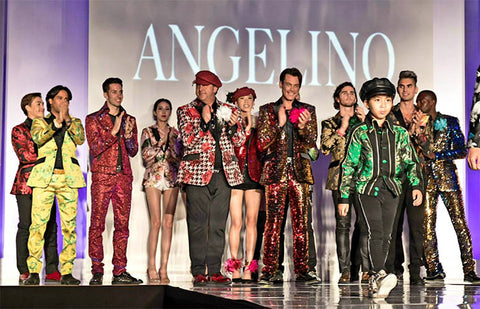Mens Fashion Suits, Tuxedo and Fashion blazer in Los Angeles
Men's Suits Fashion, Tuxedo, Fashion Blazers
Men had worn trousers and jackets for a long time, as far back as the seventeenth century. Mens suits have been around since 1666, introduced to Britain by King Charles II. Of course, it wasn't similar to what we know as a suit today, but definitely, that was the introduction of this mens formal wear. King Charles II also added a third element—the vest—to stimulate the English wool trade and force noblemen to leave French fashion.
King Charles II preferred basic black velvet vests and wool fabric with elaborate embroidery and trims to glamorize the outfit. French courtiers quickly copied the new design, especially the silk waistcoats adorned with lavish trimmings and embroidery. However, by 1700, the silhouette of the waistcoat had shrunk and simplified, with skirts ending past the knee and no collars or sleeves.
The waistcoat evolved into a more ornamental, showy, and diversified component of the three-piece suit throughout the next century.
Mens suits fashion changed over time, and in the nineteenth century, millionaire James Brown Potter introduced the tuxedo to Americans in 1886 after meeting the Prince of Wales while on tour in Britain. Dandies like Beau Brummell, a captain who became close to the Prince of Wales, also changed this style.
Brummell eschewed the elaborate (and costly) style featuring trims and embroideries of breeches and stockings in favor of downplayed, yet flawlessly custom-fitted, tailored pants, white petticoats, and a dull coat with

Start of mens Suits New York Public Library
Tuxedo
The men's tuxedo evolved into a sophisticated style by the end of the nineteenth century, prioritizing integrity, discipline, and objectivity over frivolous styles that were considered silly and pointless.
The tuxedo and dinner jacket had gained popularity and were acceptable on formal occasions by the early twentieth century. A peaked lapel jacket and black accessories were also required by etiquette or current men's fashion.
The casual lounge suit (a jacket and trousers) gradually replaced the long coats over time. Additionally, when men started wearing wristwatches, the waistcoat, which once held the pocket watch, no longer served a functional purpose.
World War I impacted society, culture, and fashion in general. As a result, many of the popular men's fashions of the 1920s evolved from trends prevalent well before World War I and as early as 1910.
Beginning in 1914, a significant number of men donned military coats and uniforms, and the war had a significant impact on both women's and men's fashion. However, men's suit fashion and tuxedos would make a comeback after the war.
While the lounge suit became increasingly popular daily, the frock coat and morning coat remained popular for formal day events. People wore tailcoats and waistcoats with trousers, dominating evening menswear. Less formal evening attire, such as a tuxedo, was also acceptable. For any event, men wore a variety of fashion suits, sportswear, and tuxedos.
After World War II, America experienced a period of informality. During this period, tuxedos were no longer the norm. When men went out at night, they wore suits rather than tuxedos.
In the 1950s, designers brought back the tuxedo look. However, few alterations were made, including adding more new fabric styles and qualities, more complicated shirt patterns like ruffle shirts and designs, and a shorter, more fitting jacket.
By the 1970s, men's tuxedo fashion had entirely reinvented the tuxedo in the disco style. But, unfortunately, when it came to the traditional tuxedo styling, a young, revolutionary age tossed off practically everything, leaving only the rough shape.
By the 1980s, a return to classic style had pleasantly resurfaced, and tuxedos had become more formal in appearance.
Formal wear suffered another blow in the late 2000s, as dress regulations got more disorganized and misinterpreted.
Finally, the mens Suits, suit jackets, and tuxedos, especially fashion blazers, are experiencing a renaissance in the 2010s after the financial crises of 2008. Men needed to be more self-disciplined, persistent, innovative, versatile, and motivated.
Surprisingly, the best time to wear a blazer is anytime. Yes, you may wear it throughout the year. For summer, choose mens blazers in a lighter fabric, while for winter, choose a thicker one.

Los Angeles, Fashion show
Mens fashion formal wear, including mens fashion suits, fashion blazers, and tuxedos in downtown Los Angeles, Fashion District,
Ask for our free shipping. 213-622-0915
Leave a comment